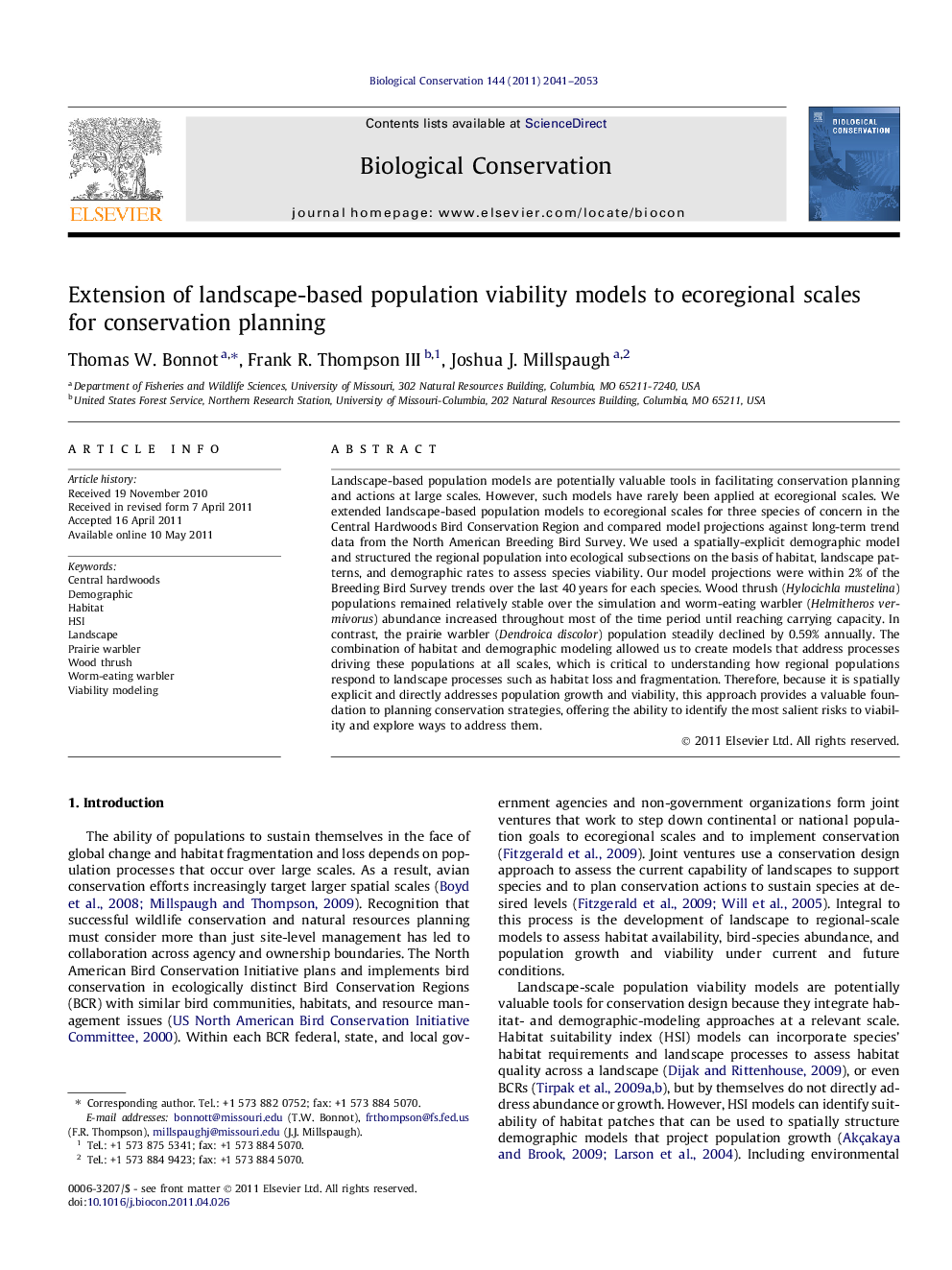| Article ID | Journal | Published Year | Pages | File Type |
|---|---|---|---|---|
| 4385452 | Biological Conservation | 2011 | 13 Pages |
Landscape-based population models are potentially valuable tools in facilitating conservation planning and actions at large scales. However, such models have rarely been applied at ecoregional scales. We extended landscape-based population models to ecoregional scales for three species of concern in the Central Hardwoods Bird Conservation Region and compared model projections against long-term trend data from the North American Breeding Bird Survey. We used a spatially-explicit demographic model and structured the regional population into ecological subsections on the basis of habitat, landscape patterns, and demographic rates to assess species viability. Our model projections were within 2% of the Breeding Bird Survey trends over the last 40 years for each species. Wood thrush (Hylocichla mustelina) populations remained relatively stable over the simulation and worm-eating warbler (Helmitheros vermivorus) abundance increased throughout most of the time period until reaching carrying capacity. In contrast, the prairie warbler (Dendroica discolor) population steadily declined by 0.59% annually. The combination of habitat and demographic modeling allowed us to create models that address processes driving these populations at all scales, which is critical to understanding how regional populations respond to landscape processes such as habitat loss and fragmentation. Therefore, because it is spatially explicit and directly addresses population growth and viability, this approach provides a valuable foundation to planning conservation strategies, offering the ability to identify the most salient risks to viability and explore ways to address them.
► We extended landscape-based population viability models to ecoregional scales. ► Models structured regional populations into patches representing sources and sinks based on habitat and demographic rates. ► Model projections were within 2% of the reported trends over the last 40 years. ► Combining habitat and demographic modeling allowed us to address processes driving populations at all scales. ► Our approach provides a valuable tool for conservation planning.
